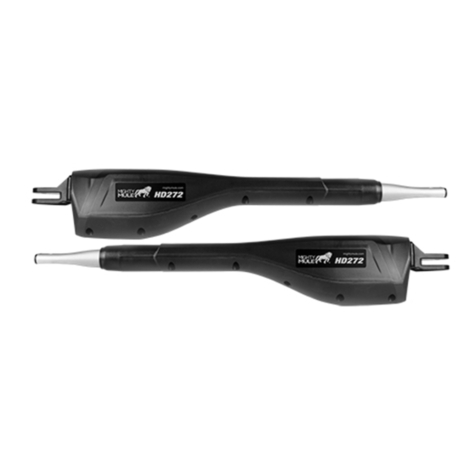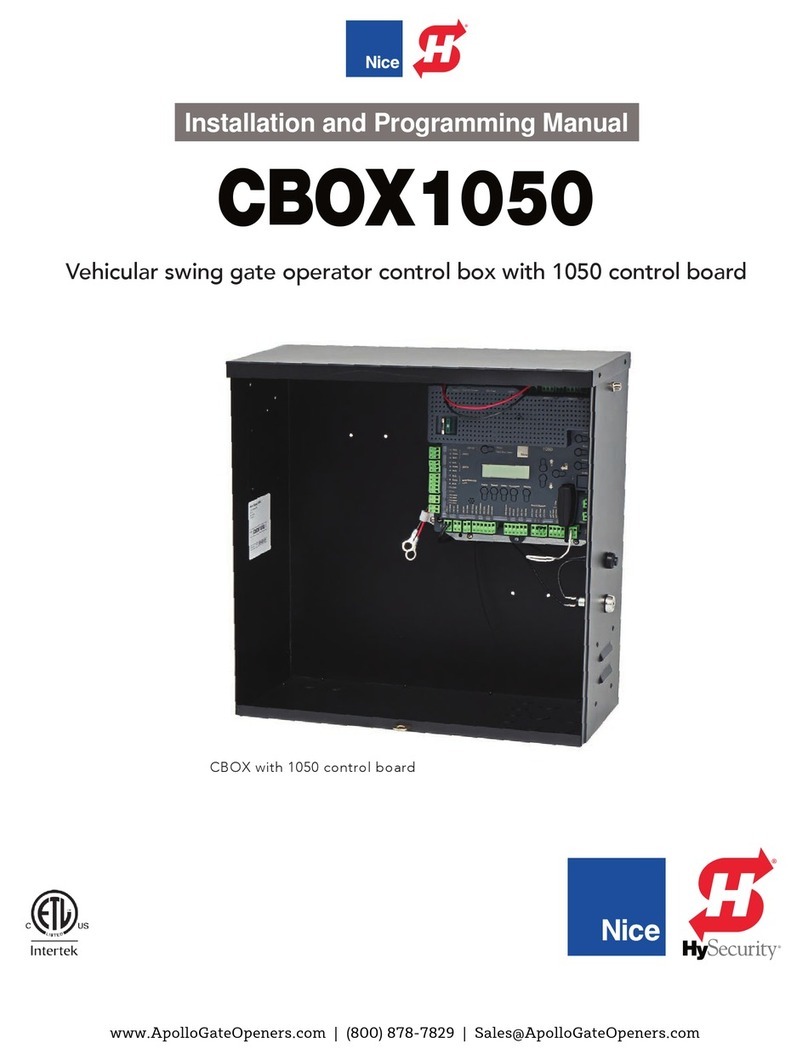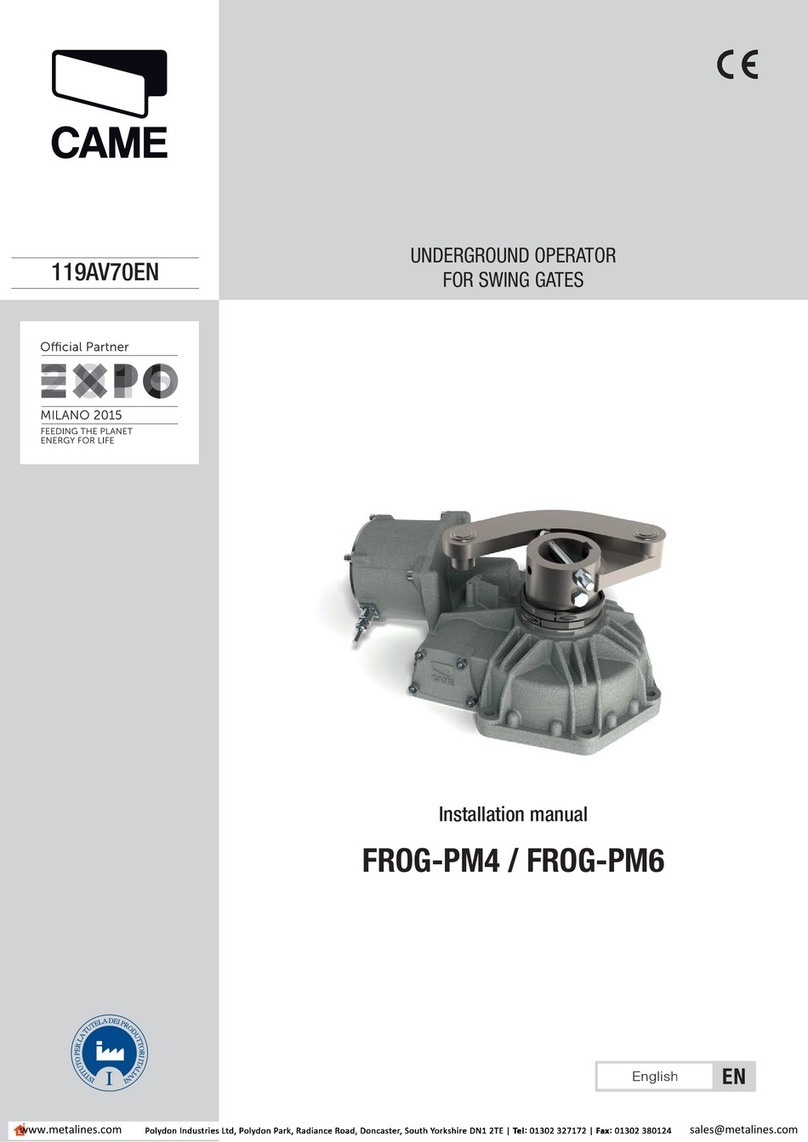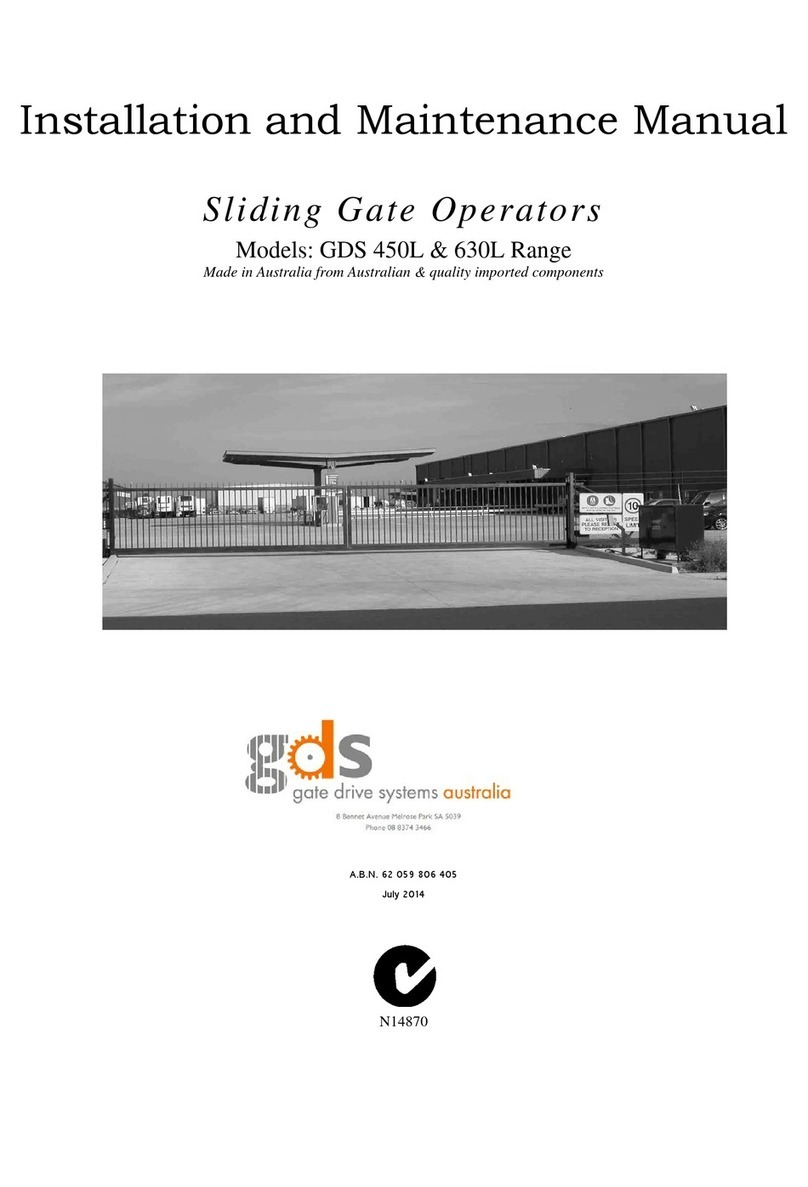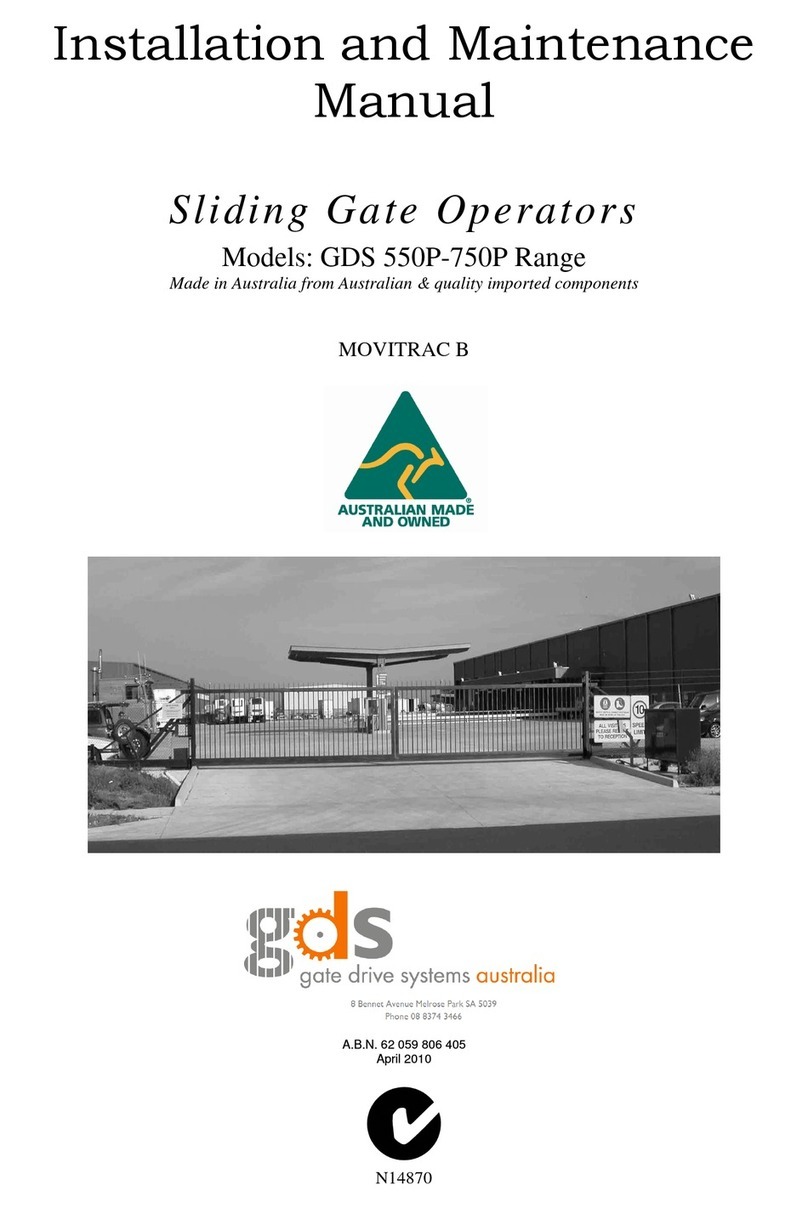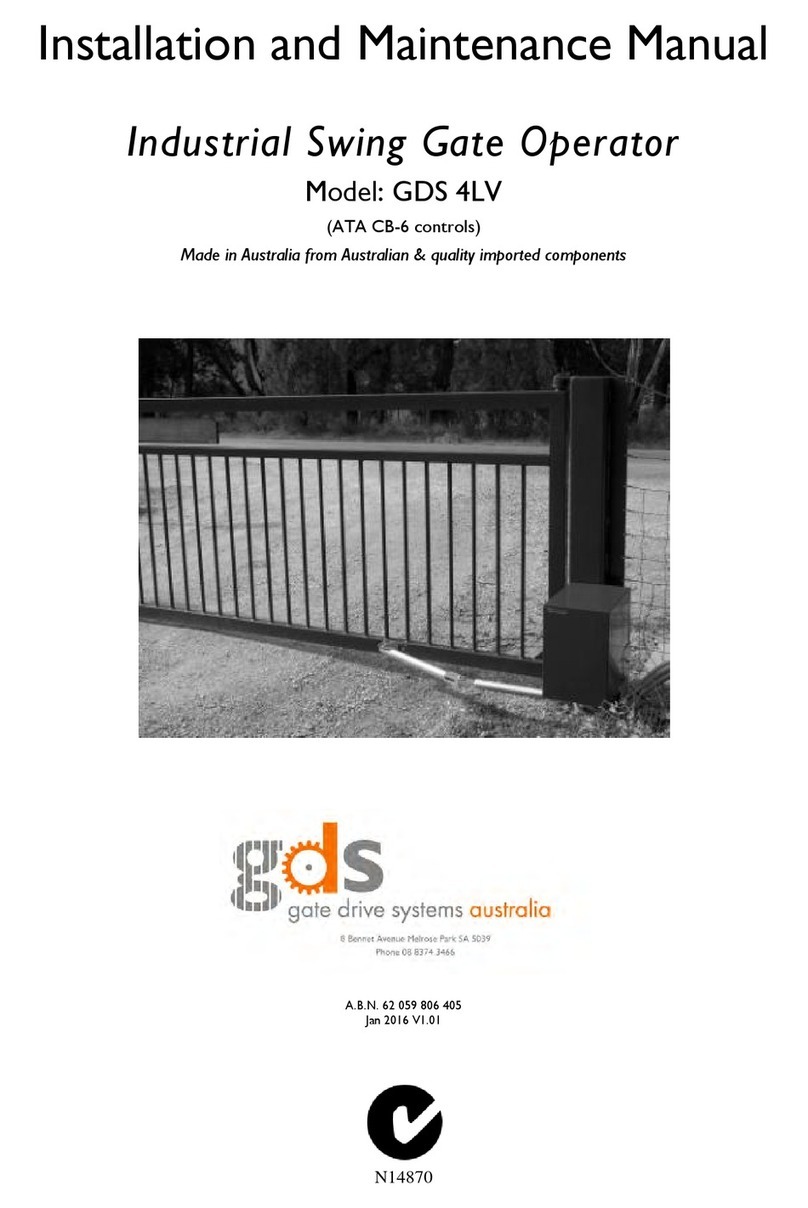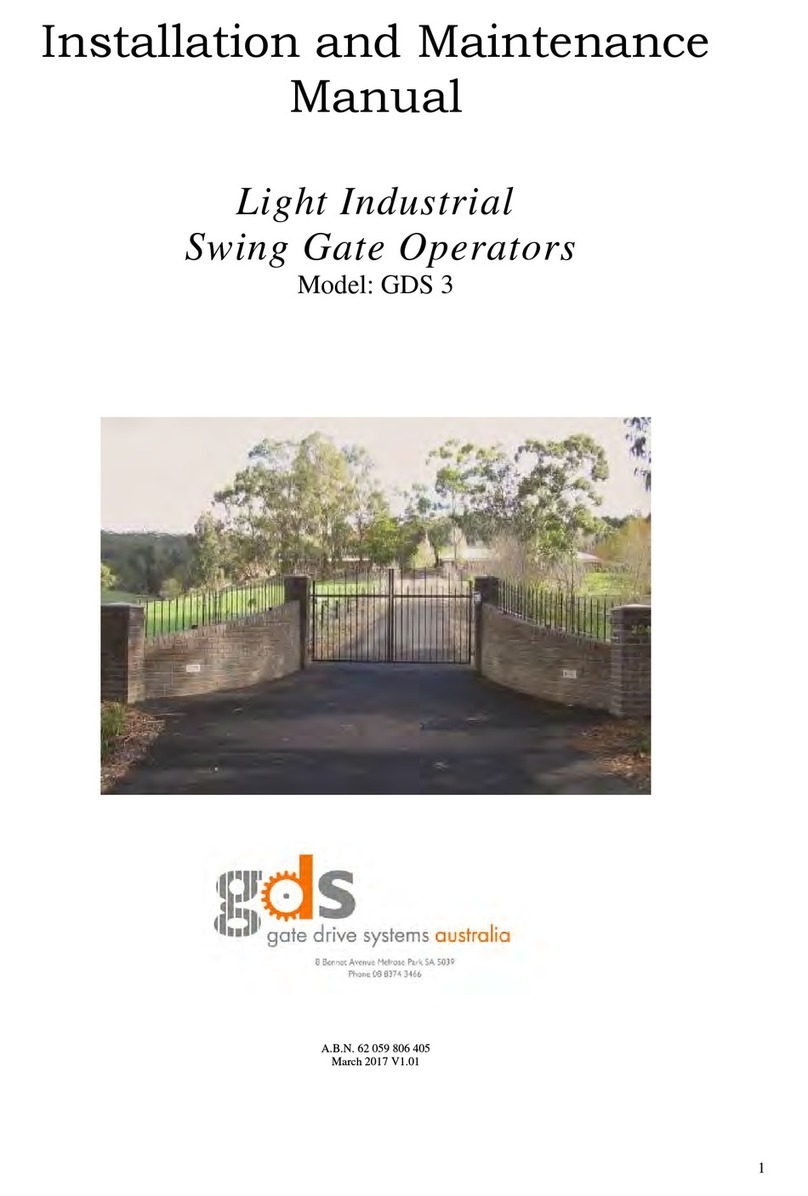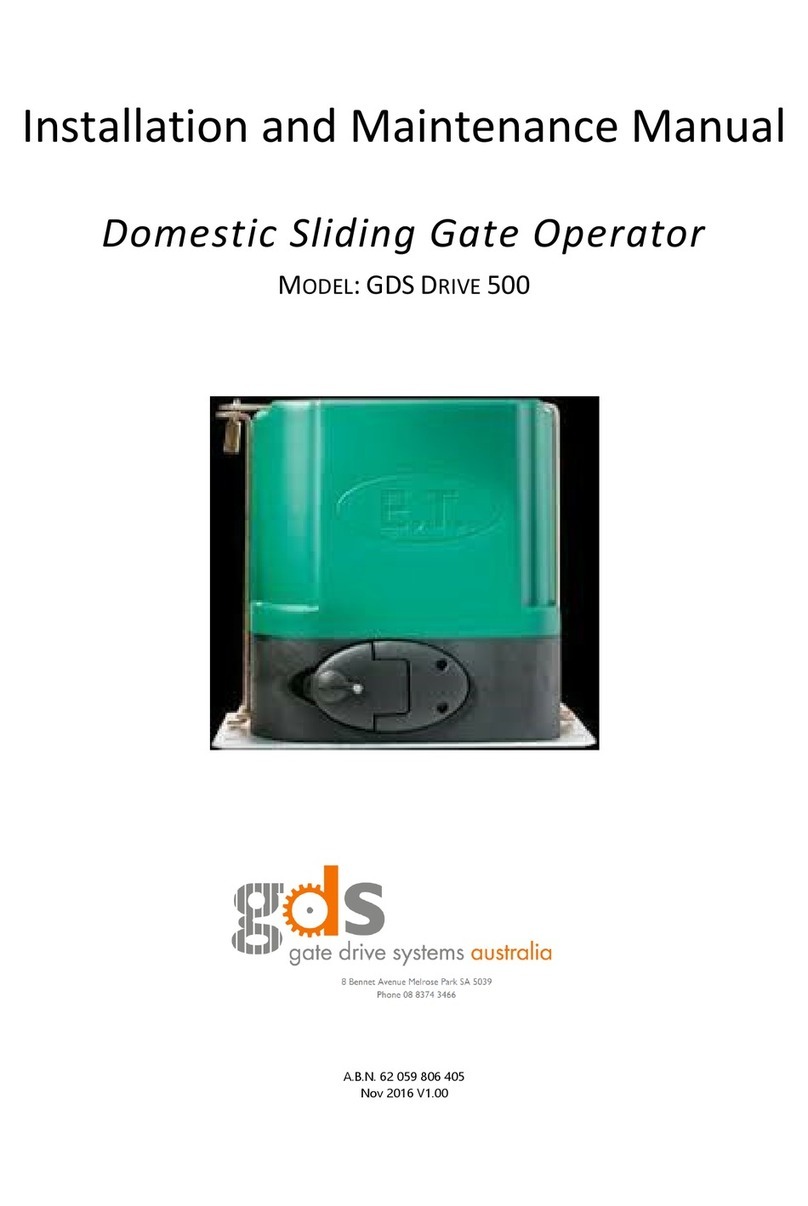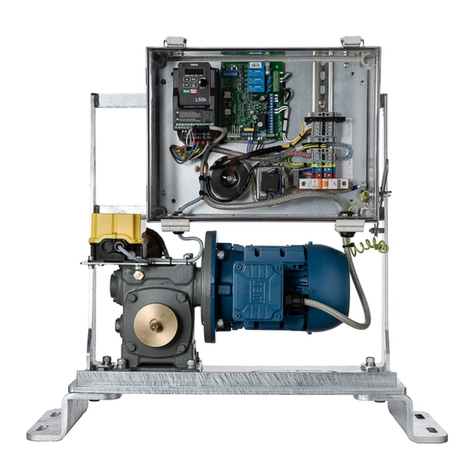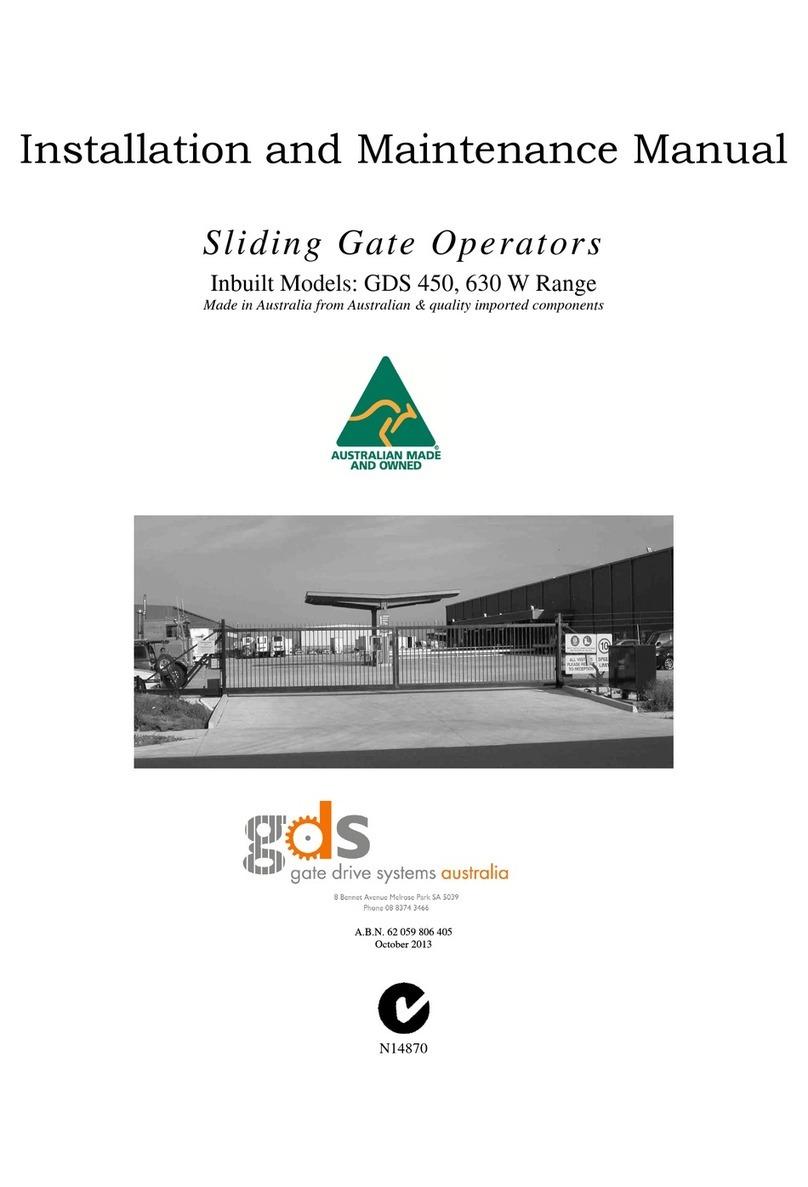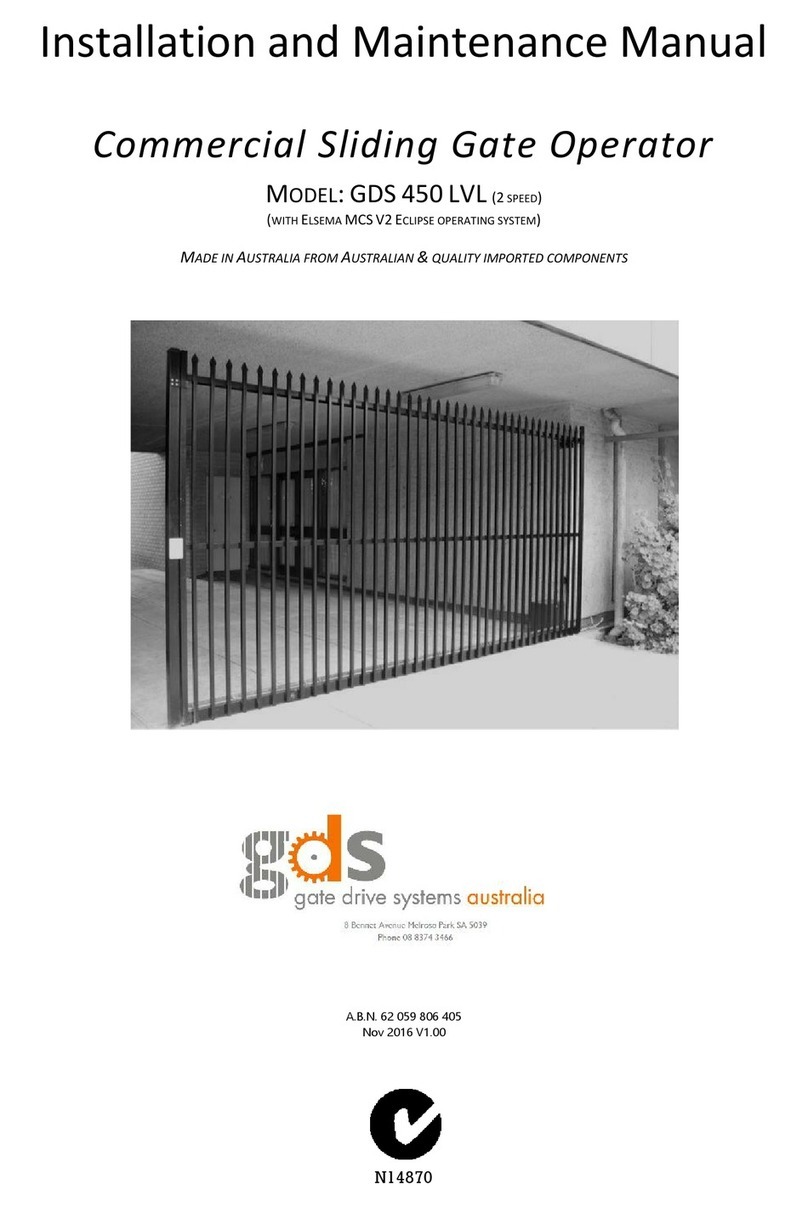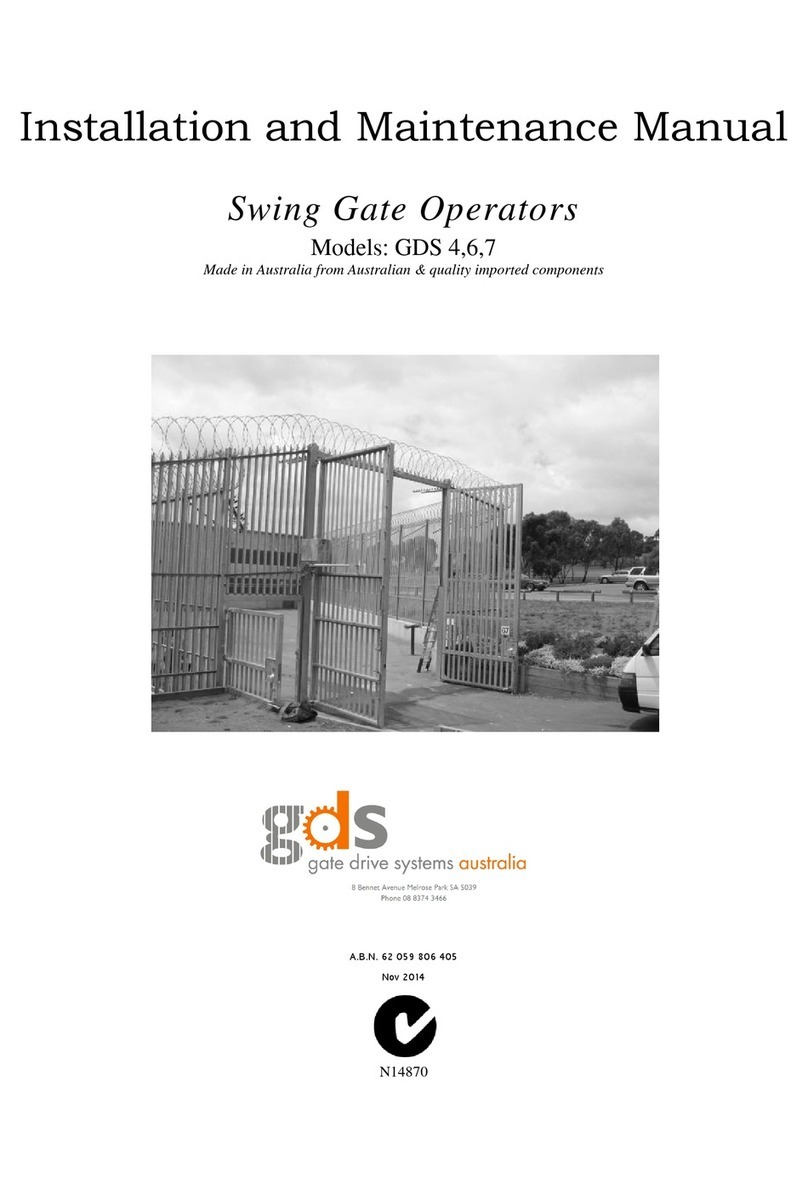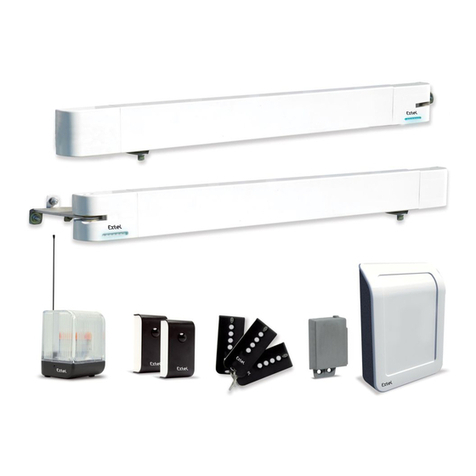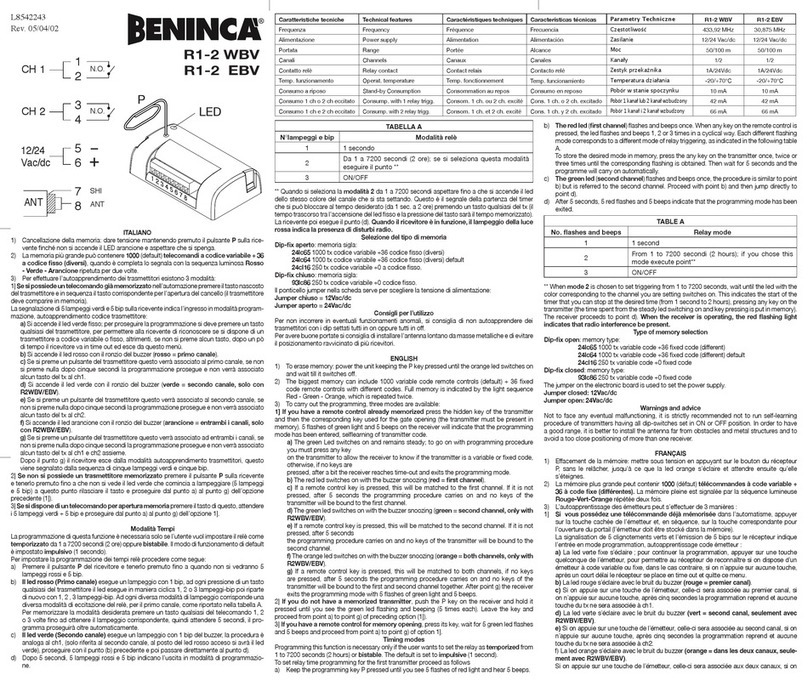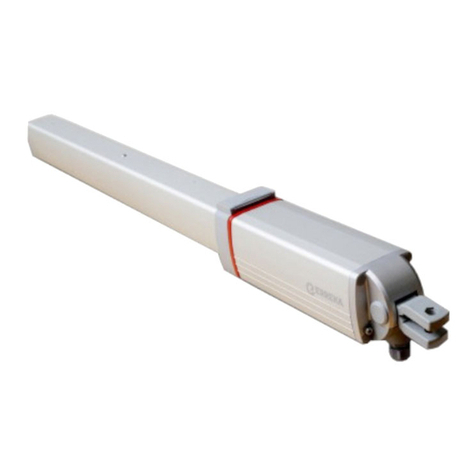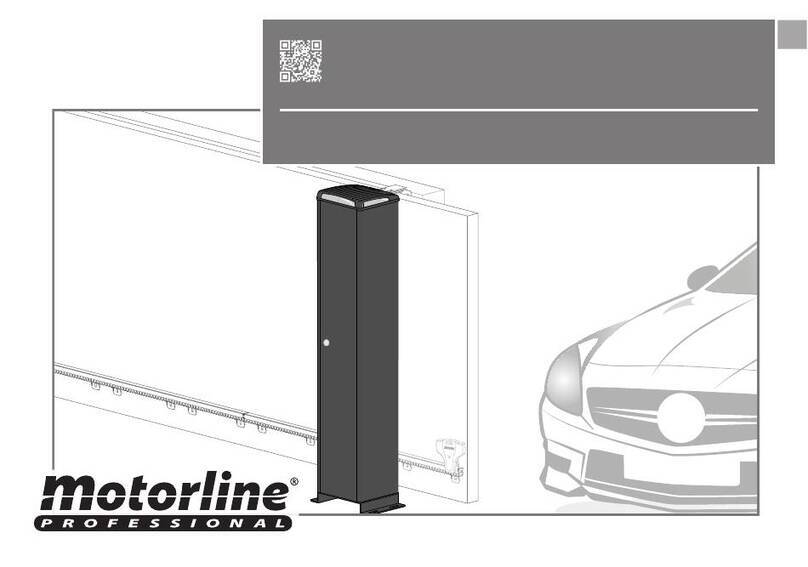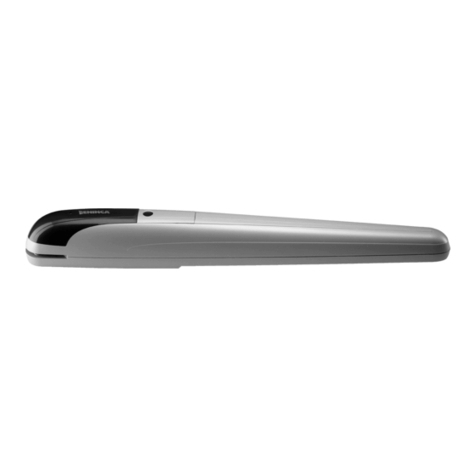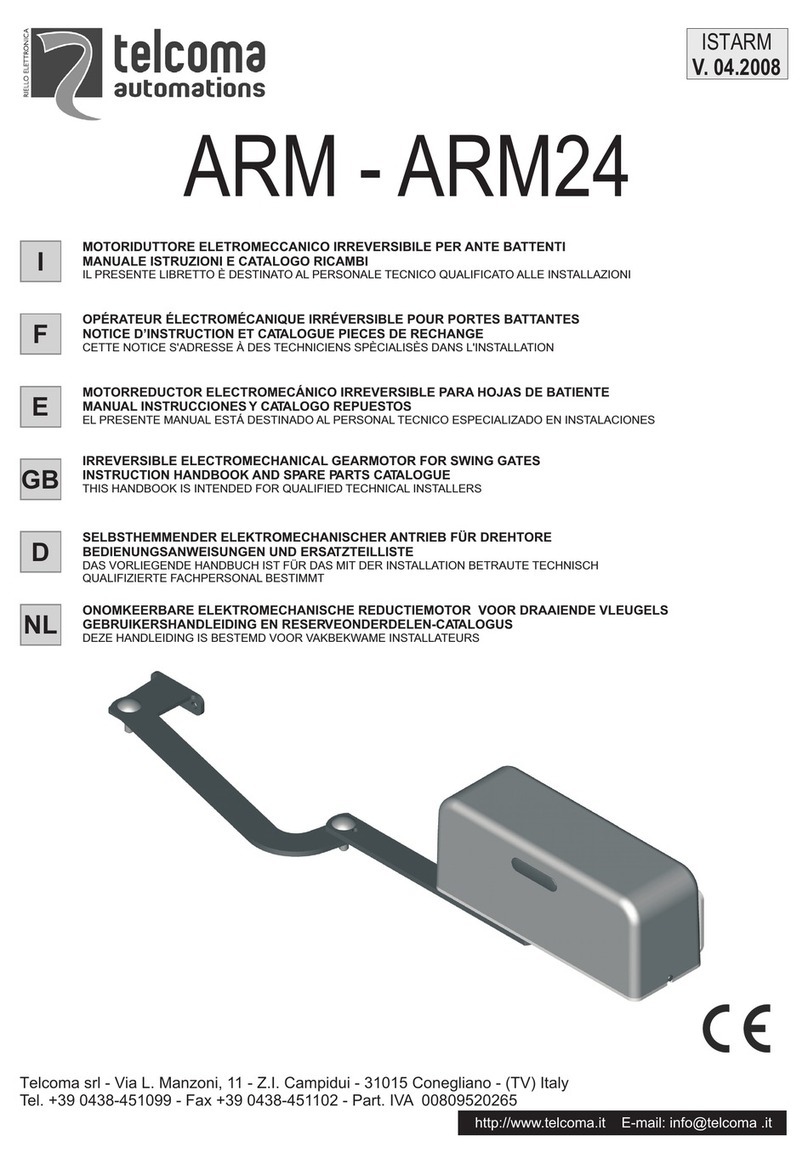1. SAFETY PRECAUTIONS
WARNING! FAILURE TO FOLLOW THESE SAFETY PRECAUTIONS AND INSTALLATION INSTRUCTIONS COULD RESULT
IN INJURY OR DEATH AND/OR DAMAGE TO PROPERTY AND EQUIPMENT.
•Appropriately licensed and competent personnel only should install the automation equipment.
The operators are designed specifically to open and close sliding gates or doors and should not be used for any
other purpose.
Before commencing installation, read through this installation manual.
Check that the operator and controls are in new condition and have not been damaged in transit.
Check the gate or door and its associated support posts and walls to protect against shearing, compression and
other various traps which could cause serious injury or death. Take into consideration the general installation and
surrounding environment.
Check the gateposts or mounting structure has the necessary strength and rigidity to support the operator and the
load of the opening and closing gate motion.
Gate leaf`s over 2.4m in length, should have some form of electro mechanical, or magnetic locking fitted to
avoid possible damage to gearbox from forcing due to vandalism, negligence, ramming.
CAUTION!
Always incorporate the appropriate Photo Electric Cells, Induction Loops and any other safety devices to protect
both equipment and personnel. Extra caution should be employed when using operator in auto close mode.
•Display any necessary signs to indicate any danger areas and automatic operation of the gate or door.
The operators are not designed to be used in any hazardous areas or areas subject to flooding etc.
All electrical connections and wiring must be performed with AS/NZS 3000-2018 as the guidelines. (Or its
counterpart for other countries outside of Australia and New Zealand)
WARNING! ELECTRICITY CAN KILL
The manufacturer of the automation equipment is not responsible for the damage which may be caused to either, the
operator, gate or door and any other person or equipment when: -
oWrong or poor installation practices were performed.
oNo or inadequate safety devices were used.
oEither the surrounding structure or the gate or door strength and rigidity was not sufficient for the task in
hand.
oInefficient locking devices were employed.
oPoor maintenance on the equipment.
oAny other circumstances beyond the manufacturers control.
Isolate power before attempting any maintenance, qualified personnel only to carry out maintenance
Only original spare parts are to be used should there be a requirement for them.
Keep loose clothing and hands clear of the gate whilst in operation or potentially able to be operated.
The installer should provide all information concerning the use of the automation equipment as well as
instructions regarding the manual override and maintenance procedures to the users of the system.
